How Can We Measure the Prioritization of Strategies for Transitioning to a Circular Economy at Macro Level? A New Approach
Abstract
1. Introduction
2. Theoretical Background
2.1. Circular Economy Definition
“Circular economy is an economy built from social production-consumption systems that maximize service produced from the linear flow of nature, society, and energy flow. This is done using flows of cyclic materials, renewable energy sources, and cascade-type energy flows. The successful circular economy contributes to all three dimensions of sustainable development. Circular economy limits the flow of production to a level that nature tolerates and uses ecosystem cycles in economic cycles, respecting their natural reproduction rates.”
2.2. Macro-Level Initiatives Regarding Circular Economy
2.3. Transition towards a CE, CE Barriers and Stakeholders
2.4. New Institutional Theory (NTI) and Its CE Implications
2.5. Intermediate Summary: Findings Relevant to the Study and Questionnaire Design
3. Materials and Methods
3.1. The Development of the Questionnaire
- (1)
- The problem question was: What are the leading strategies and criteria, at the macro-level, used in the context of the transition towards a circular economy?
- (2)
- Inclusion and exclusion criteria, the material considered for this purpose were documents from governments, the European Union, representative organizations of sectors, legislations, plans of action and roadmaps of different countries found through Google Scholar. As keywords, we used “circular economy” AND strategies OR actions OR initiatives AND transition. The research was conducted considering the documents published until February 2020. Thus, legislation and documents published after this period was not considered. The language considered was Portuguese, English, Italian and Spanish, considering the level of knowledge of researchers involved in this study. The documents not adherent to these criteria were eliminated.
- (3)
- The analysis was made following the procedures of Bardin [56], related to categorical content analysis, which has three main steps: (i) pre-analysis; (ii) exploration of the material; and (iii) treatment of results, inference and interpretation.
| Nr | Actions/Strategies | Description | Source |
|---|---|---|---|
| 1 | Inter-firm collaboration | Arrange collaboration and business relations. Rules are needed because interdependencies are increased and become more specific as compared to collaboration in linear systems. | [57,58,59,60]. |
| 2 | Waste management Directives | Provides a general framework of waste management requirements and sets the basic waste management definitions, define actors, responsibilities, rules, guidelines, principles, instruments and other relevant information. | [10,20,21,22,61,62,63,64,65,66]. |
| 3 | Reverse Logistics | “Process of moving goods from their typical final destination for the purpose of recapturing value, or proper disposal’’ [67] (p. 2). | [61,68]. |
| 4 | Closed loop (Reuse, Repair, Reconditioning, Remanufacturing, Recycling) | Reusing goods means extending the utilization period of goods through the design of long-life goods; introducing service loops to extend an existing product’s life, including reuse of the product itself, repair, reconditioning and technical upgrading, and a combination of these. The result of the reuse of goods is a slowdown of the flow of materials from production to recycling [69]. The operational steps of take back can be cited: transportation, disassembly, reconditioning, reintegration and the financial aspects [70]. | [20,21,22,68,70,71,72,73,74,75]. |
| 5 | Sectorial Agreements | Sectorial agreements are acts of a contractual nature, signed between the Government and the value chains (manufacturers, importers, distributors or traders), aiming at the implementation of shared responsibility for the products’ life cycle. Its main objective is to guarantee the competitiveness of an economic sector in order to reduce the values and the benefits sharing [61]. | [20,21,22,57,61,65]. |
| 6 | Social inclusion | Social inclusion is the act of including in society categories of people historically excluded from the socialization process, considering their race, color, sex, language, religion, political or other opinion. As well as those in situations of socioeconomic vulnerability, such as homeless people, immigrants and low-income people [76]. | [21,22,61,66,75]. |
| 7 | Financial incentives and/or Support and Fiscal measures | Financial incentives can be considered monetary rewards to promote the take-back and recycling activities, in general, aimed to consumers. Financial support refers to grants, subsidies, direct and indirect investments, and public–private partnerships through which city governments can enable city development towards a circular economy. The funds may draw on existing budgets and revenues or be raised in addition and specifically to support the circular economy initiatives. Fiscal measures such as taxes, penalties and charges, can help incentivize or discourage behaviors [77]. | [22,57,59,77,78,79]. |
| 8 | Stakeholders involvement | Stakeholder engagement is often key to the development of effective circular economy roadmaps and policy strategies [77]. | [20,21,22,61,65,66,72,75,77]. |
| 9 | Industrial symbiosis | A process-orientated solution, concerned with using residual outputs from one process as feedstock for another process, which benefits from geographical proximity of businesses [74]. | [20,21,22,27,66,74]. |
| 10 | Partnerhips with research and Industry | Partnerships can help build capacity for innovation and the scaling of circular economy practices with the aim of expanding access to a variety of contributors who otherwise risk being excluded from the innovation process [66,77]. | [22,60,66]. |
| 11 | Circular economy roadmap | Roadmaps can provide overarching direction by setting strategic goals, can set a direction and inform the development of other policies, standards or material and waste classifications and regulations [77]. | [77]. |
| 12 | Eco-cities | Livable, resilient cities that are regenerative by design. Byembedding circular economy principles into urban policy levers, cities can bring about changes to the use and management of materials in cities; and urban priorities around access to housing, mobility and economic development can also be met in a way that supports prosperity, jobs, health and communities. Changes to material choices, uses and management can also open up local production opportunities [77]. | [27,80]. |
| 13 | Incentives to SMEs | Small and medium-sized enterprises (SMEs) and entrepreneurship are essential drivers of economic and social well-being. Representing 99% of all businesses, generating about 60% of employment and totaling between 50% and 60% of value added in the OECD area, SMEs are key for delivering sustainable and inclusive economic growth [66]. Examples: Incentives for SMEs to hire or buy expertise through mentor networks; Financial assistance programme for SMEs; Cross-industry SME market development programme; Expanding assistance to SME exporters and facilitating contacts between SMEs and overseas buyers; Online and physical desks for helping SMEs; Special lines of credits to SMEs; Calls of public Procurement aimed to SMEs; Incubator Programme; Reduction of taxes rate, etc. [66]. | [22,60,66]. |
| 14 | Product Policy | Widen the Ecodesign Directive beyond energy-related products so as to make the Ecodesign framework applicable to the broadest possible range of products and make it deliver on circularity. | [22]. |
| 15 | Green or Sustainable Procurement | The inclusion of circular economy principles and requirements in the Green Procurement and/or Sustainable procurement, mainly in public context. | [22,60,77]. |
| 16 | Regulation | Legislation and regulation are a core domain of government and can play an important role in shaping markets, influencing behavior and removing barriers that inhibit progress [77]. Regulations can influence the transition from linear to circular for a specific material or end of life product [75]. | [22,75,77]. |
| 17 | Getting value out of biomass | Biomass refers to the mass of living organisms, including plants, animals and microorganisms, or, from a biochemical perspective, cellulose, lignin, sugars, fats and proteins. Biomass includes both the above- and below-ground tissues of plants, for example, leaves, twigs, branches, boles, as well as roots of trees and rhizomes of grasses. Biomass has been used as a fuel source [81]. | [21,22,27]. |
| 18 | Construction and demolition (C&D) waste | Proper management of C&D waste and recycled materials—including the correct handling of hazardous waste—can have major benefits in terms of sustainability and the quality of life [22]. | [10,21,22,27,77]. |
| 19 | Water reuse | The potential role of treated wastewater reuse as an alternative source of water supply is now well acknowledged and embedded within international, European and national strategies. UN Sustainable Development Goal on Water (SDG 6) specifically targets a substantial increase in recycling and safe reuse globally by 2030 [22]. | [10,22,73,77]. |
| 20 | Energy efficiency | Energy efficiency simply means using less energy to perform the same task—that is, eliminating energy waste. Energy efficiency brings a variety of benefits: reducing greenhouse gas emissions, reducing demand for energy imports and lowering our costs on a household and economy-wide level [82]. | [10,22,73,77]. |
| 21 | Reduction of food waste | Preventing and reducing food waste, from those who produce and process foods (farmers, food manufacturers and processors) to those who make foods available for consumption (hospitality sector, retailers) and ultimately consumers themselves [28]. | [20,21,22,27,72,77]. |
| 22 | Eco-innovation and eco-design | Eco-innovation is regarded as a key factor in the shifting from a linear to a CE. Eco-design is considered as a catalyst to switch from linear economy to a circular economy. Products are required to be designed both for circular loops and for revenue generation [74]. | [22,66,71,74,75,77,83,84]. |
| 23 | Creation/Generation of Jobs | Potential to generate Jobs at the local level aiming the social-productive inclusion of citizens. | [20,21,22,61,65,85,86]. |
| 24 | Sharing economy | Providing the capability or services to satisfy user needs without needing to own physical product [74]. | [65,74,77]. |
| Category | Criterion | Description | Direction | Source | |
|---|---|---|---|---|---|
| Social | C1 | Adaptability to current legislation. | The degree to which the circular economy strategy helps to comply with regional and national regulations. | Maximize | [87,88]. |
| C2 | Social acceptance | The degree to which the alternative helps to increase public acceptance of circular economy strategies. | Maximize | ||
| C3 | Jobs creation | The absorption potential of the regional/national workforce according to the requirements that will be created by the application of the strategy. | Maximize | ||
| Environmental | C4 | Reduction of incorrect disposal of waste | The degree to which this alternative increases the number waste collected and prevents it from being disposed of incorrectly. | Maximize | [87,88,89,90,91]. |
| C5 | Prevention of the environment | Reduction of negative impact to the environment (reduction of the use of water, energy, pollution, reduction of fossil fuels, reduction of the use of landfills). | Maximize | ||
| Economic | C6 | Investment cost | The total amount of cost incurred to implement the strategy. | Minimize | [87,88,91]. |
| C7 | Operational and Maintenance Cost | The cost incurred to maintain this strategy operational and to guarantee its maintenance. | Minimize | ||
| Technical | C8 | Technical difficulty | Difficulty level to implement a given action due to the knowledge, technologies and solutions required | Minimize | [17,87] |
| C9 | Adaptability to local conditions | Degree to which this alternative can be applied without obstacles, based on the particular characteristics of the region/country. | Maximize | ||
| C10 | Functionality | Degree to which this option has the potential to remain constant and smooth, such as, having the maintenance requirements for specialized personnel and, simplicity of operation. | Maximize | ||
3.2. Validation of the Questionnaire
4. Results: Validation of the Questionnaire
4.1. Semantic Validation
4.2. Characterization of the Sample of Respondents
4.3. Statistical Validation
4.4. Discussion of Results
- (i)
- We used an integrative literature review to gather the main strategies that enable the transition towards a circular economy and the criteria related to technical, social, environmental and economic aspects to design the developmental study.
- (ii)
- We also defined the theory lens to analyze the results. The Institutional Theory was selected to make it possible to elaborate assertions capable to confirm or refute the assumption that generating a more favorable environment at the macro level is possible to enable the adoption of strategies related to the circular economy at the meso and micro level (cities, organizations).
- (iii)
- We built the 5-point ordinal scale in order to enable respondents to evaluate the 24 strategies enabling the circular economy transition at the macro level, under a set of 10 criteria (technical, social, environmental and economic).
- (iv)
- We submitted this scale to 17 experts including nine from Brazil, three from Italy, one from Spain, two from Argentina and three from the United Kingdom, which made some suggestions to improve the instrument.
- (v)
- We applied the statistical validation process through the opinion of 347 survey respondents from 25 countries (Section 4.3 presents the characterization of the sample of stakeholders participating in this step).
- (vi)
- After verifying the adequacy of the data for carrying out a factor analysis, we conducted 24 confirmatory factor analyses (CFA) to verify the structures of the factors defined a priori related to the strategies to induce the transition to the circular economy. We conducted exploratory factor analysis and ensured the verification of the reliability of the questionnaire, through the Cronbach’s alpha coefficient, the Kaiser–Meyer–Olkin (KMO) index and the Bartlett sphericity test [93]. For all factors, Cronbach’s Alpha results were above 0.70, indicating that the instrument consistently and reproducibly measured each factor. Thus, the reliability and validity of the research instrument are ensured.
5. Concluding Remarks, Limitations and Future Directions
Author Contributions
Funding
Institutional Review Board Statement
Informed Consent Statement
Data Availability Statement
Acknowledgments
Conflicts of Interest
References
- Ellen MacArthur Foundation—EMF. Circular Economy Overview. 2013. Available online: https://www.ellenmacarthurfoundation.org/circular-economy/overview/concept (accessed on 30 September 2021).
- Murray, A.; Skene, K.; Haynes, K. The circular economy: An interdisciplinary exploration of the concept and application in a global context. J. Bus. Ethics 2017, 140, 369–380. [Google Scholar] [CrossRef]
- Sehnem, S.; Jabbour, C.J.C.; Pereira, S.C.F.; de Sousa Jabbour, A.B.L. Improving sustainable supply chains performance through operational excellence: Circular economy approach. Resour. Conserv. Recycl. 2019, 149, 236–248. [Google Scholar] [CrossRef]
- Korhonen, J.; Honkasalo, A.; Seppälä, J. Circular economy: The concept and its limitations. Ecol. Econ. 2018, 143, 37–46. [Google Scholar] [CrossRef]
- Sauvé, S.; Bernard, S.; Sloan, P. Environmental sciences, sustainable development and circular economy: Alternative concepts for trans-disciplinary research. Environ. Dev. 2016, 17, 48–56. [Google Scholar] [CrossRef]
- Cosenza, J.P.; De Andrade, E.M.; De Assunção, G.M. A circular economy as an alternative for Brazil’s sustainable growth: Analysis of the national solid waste policy. J. Environ. Manag. Sustain. 2020, 9, 1–28. [Google Scholar]
- Kirchherr, J.; Reike, D.; Hekkert, M. Conceptualising the circular economy: An analysis of 114 definitions. Resour. Conserv. Recycl. 2017, 127, 221–232. [Google Scholar] [CrossRef]
- Korhonen, J.; Nuur, C.; Feldmann, A.; Birkie, S.E. Circular economy as an essentially contested concept. J. Clean. Prod. 2018, 175, 544–552. [Google Scholar] [CrossRef]
- De Pascale, A.; Arbolino, R.; Szopik-Depczyńska, K.; Limosani, M.; Ioppolo, G. A systematic review for measuring circular economy: The 61 indicators. J. Clean. Prod. 2021, 281, 124942. [Google Scholar] [CrossRef]
- Nuñez-Cacho, P.; Górecki, J.; Molina-Moreno, V.; Corpas-Iglesias, F.A. What gets measured, gets done: Development of a circular economy measurement scale for building industry. Sustainability 2018, 10, 2340. [Google Scholar] [CrossRef]
- Kuzma, E.; Sehnem, S. Validation of the Measurement Scale for the Circular Economy: A proposal based on the precepts of innovation. Int. J. Prof. Bus. Rev. 2022, 7, e0278. [Google Scholar]
- Mishra, R.; Singh, R.K.; Govindan, K. Barriers to the adoption of circular economy practices by SMEs: Instrument development, measurement and validation. J. Clean. Prod. 2022, 351, 131389. [Google Scholar] [CrossRef]
- Reike, D.; Vermeulen, W.J.; Witjes, S. The circular economy: New or Refurbished as CE 3.0? Exploring Controversies in the Conceptualisation of the Circular Economy through a Focus on History and Resource Value Retention Options. Resour. Conserv. Recycl. 2018, 135, 246–264. [Google Scholar] [CrossRef]
- Ibanescu, D.; Cailean, D.; Teodosiu, C.; Fiore, S. Assessment of the waste electrical and electronic equipment management systems profile and sustainability in developed and developing European Union countries. Waste Manag. 2018, 73, 39–53. [Google Scholar] [CrossRef] [PubMed]
- Cramer, J. Effective governance of circular economies: An international comparison. J. Clean. Prod. 2022, 343, 130874. [Google Scholar] [CrossRef]
- Pedhazur, E.J.; Schmelkin, L.P. Artifacts and pitfalls in research. In Measurement, Design, and Analysis: An Integrated Approach; Lawrence Erlbaum Associates: Hillsdale, NJ, USA, 1991; pp. 234–241. [Google Scholar]
- Rebehy, P.C.P.W.; dos Santos Lima, S.A.; Novi, J.C.; Salgado, A.P., Jr. Reverse logistics systems in Brazil: Comparative study and interest of multistakeholders. J. Environ. Manag. 2019, 250, 109223. [Google Scholar] [CrossRef]
- Geissdoerfer, M.; Savaget, P.; Bocken, N.M.; Hultink, E.J. The Circular Economy–A new sustainability paradigm? J. Clean. Prod. 2017, 143, 757–768. [Google Scholar] [CrossRef]
- Ghisellini, P.; Cialani, C.; Ulgiati, S. A review on circular economy: The expected transition to a balanced interplay of environmental and economic systems. J. Clean. Prod. 2016, 114, 11–32. [Google Scholar] [CrossRef]
- European Commission. Communication from the Commission to the European Parliament, the Council, the European Economic and Social Committee and the Committee of the Regions. Closing the Loop—An EU Action Plan for the Circular Economy -COM/2015/0614 Final. 2015. Available online: https://eur-lex.europa.eu/legal-content/EN/TXT/?uri=CELEX%3A52015DC0614 (accessed on 4 January 2021).
- European Commission. Communication from the Commission to the European Parliament, the European Council, the Council, the European Economic and Social Committee and the Committee of the Regions. The European Green Deal—COM/2019/640 Final. 2019. Available online: https://eur-lex.europa.eu/legal-content/EN/TXT/?qid=1588580774040&uri=CELEX:52019DC0640 (accessed on 4 January 2021).
- European Commission. Communication from the Commission to the European Parliament, the Council, the European Economic and Social Committee and the Committee of the Regions. A New Circular Economy Action Plan for a Cleaner and More Competitive Europe—COM/2020/98 Final. 2020. Available online: https://eur-lex.europa.eu/legal-content/EN/TXT/?qid=1583933814386&uri=COM:2020:98:FIN (accessed on 17 January 2022).
- Sasaki, S.; Araki, T. Employer–employee and buyer–seller relationships among waste pickers at final disposal site in informal recycling: The case of Bantar Gebang in Indonesia. Habitat Int. 2013, 40, 51–57. [Google Scholar] [CrossRef]
- Abdulrahman, M.D.; Gunasekaran, A.; Subramanian, N. Critical barriers in implementing reverse logistics in the Chinese manufacturing sectors. Int. J. Prod. Econ. 2014, 147, 460–471. [Google Scholar] [CrossRef]
- Bouzon, M.; Govindan, K.; Rodriguez, C.M.T. Reducing the extraction of minerals: Reverse logistics in the machinery manufacturing industry sector in Brazil using ISM approach. Resour. Policy 2015, 46, 27–36. [Google Scholar] [CrossRef]
- Ferri, G.L.; Chaves, G.L.D.; Ribeiro, G.M. Reverse logistics network for municipal solid waste management: The inclusion of waste pickers as a Brazilian legal requirement. Waste Manag. 2015, 40, 173–191. [Google Scholar] [CrossRef] [PubMed]
- Circular Economy Coalition for Latin America and the Caribbean. Overview and Scope of Work. 2022. Available online: https://coalicioneconomiacircular.org/en/elementor-7/inicio-english/ (accessed on 4 March 2022).
- Li, W.; Lin, W. Circular economy policies in China. In Towards a Circular Economy: Corporate Management and Policy Pathways; ERIA: Jakarta, Indonesia, 2016; pp. 95–111. [Google Scholar]
- Zhu, J.; Fan, C.; Shi, H.; Shi, L. Efforts for a circular economy in China: A comprehensive review of policies. J. Ind. Ecol. 2019, 23, 110–118. [Google Scholar] [CrossRef]
- McDowall, W.; Geng, Y.; Huang, B.; Barteková, E.; Bleischwitz, R.; Türkeli, S.; Kemp, R.; Doménech, T. Circular economy policies in China and Europe. J. Ind. Ecol. 2017, 21, 651–661. [Google Scholar] [CrossRef]
- Jacobsen, N.B. Industrial symbiosis in Kalundborg, Denmark. J. Ind. Ecol. 2006, 10, 239–255. [Google Scholar] [CrossRef]
- Ramsheva, Y.K.; Prosman, E.-J.; Wæhrens, B.V. Dare to make investments in industrial symbiosis? A conceptual framework and research agenda for developing trust. J. Clean. Prod. 2019, 223, 989–997. [Google Scholar] [CrossRef]
- Saavedra, Y.M.; Iritani, D.R.; Pavan, A.L.; Ometto, A.R. Theoretical contribution of industrial ecology to circular economy. J. Clean. Prod. 2018, 170, 1514–1522. [Google Scholar] [CrossRef]
- Ritzén, S.; Sandström, G.Ö. Barriers to the Circular Economy–integration of perspectives and domains. Procedia CIRP 2017, 64, 7–12. [Google Scholar] [CrossRef]
- Neves, S.A.; Marques, A.C. Drivers and barriers in the transition from a linear economy to a circular economy. J. Clean. Prod. 2022, 341, 130865. [Google Scholar] [CrossRef]
- Jensen, S.F.; Kristensen, J.H.; Uhrenholt, J.N.; Rincón, M.C.; Adamsen, S.; Waehrens, B.V. Unlocking Barriers to Circular Economy: An ISM-Based Approach to Contextualizing Dependencies. Sustainability 2022, 14, 9523. [Google Scholar] [CrossRef]
- Asgari, A.; Asgari, R. How circular economy transforms business models in a transition towards circular ecosystem: The barriers and incentives. Sustain. Prod. Consum. 2021, 28, 566–579. [Google Scholar] [CrossRef]
- Van Langen, S.K.; Vassillo, C.; Ghisellini, P.; Restaino, D.; Passaro, R.; Ulgiati, S. Promoting circular economy transition: A study about perceptions and awareness by different stakeholders groups. J. Clean. Prod. 2021, 316, 128166. [Google Scholar] [CrossRef]
- Christensen, T.B. Towards a circular economy in cities: Exploring local modes of governance in the transition towards a circular economy in construction and textile recycling. J. Clean. Prod. 2021, 305, 127058. [Google Scholar] [CrossRef]
- Trần, T.V.; Phan, T.H.; Lê, A.T.T.; Trần, T.M. Evaluation of Factors Affecting the Transition to a Circular Economy (CE) in Vietnam by Structural Equation Modeling (SEM). Sustainability 2022, 14, 613. [Google Scholar] [CrossRef]
- Bianchini, A.; Rossi, J. An Innovative Visualisation Tool to Boost and Monitor Circular Economy: An Overview of Its Applications at Different Industrial Sectors. In Product Life Cycle—Opportunities for Digital and Sustainable Transformation; Petrillo, A., de Felice, F., Eds.; IntechOpen: London, UK, 2021; 101p. [Google Scholar]
- Oliveira, M.; Miguel, M.; van Langen, S.K.; Ncube, A.; Zucaro, A.; Fiorentino, G.; Passaro, R.; Santagata, R.; Coleman, N.; Lowe, B.H.; et al. Circular economy and the transition to a sustainable society: Integrated assessment methods for a new paradigm. Circ. Econ. Sustain. 2021, 1, 99–113. [Google Scholar] [CrossRef]
- Powell, W.W.; Colyvas, J.A. The new institutionalism. In The International Encyclopedia of Organization Studies; SAGE Publications Inc.: Thousand Oaks, CA, USA, 2007; Volume 1. [Google Scholar]
- DiMaggio, P.J.; Powell, W.W. The iron cage revisited: Institutional isomorphism and collective rationality in organizational fields. Am. Sociol. Rev. 1983, 48, 147–160. [Google Scholar] [CrossRef]
- Scott, R.W. Unpacking institutional arguments. In The New Institutionalism in Organizational Analysis; DiMaggio, P.J., Powell, W.W., Eds.; The University of Chicago Press: Chicago, IL, USA, 1991; pp. 164–181. [Google Scholar]
- Meyer, J.W.; Rowan, B. Institutionalized Organizations: Formal structure as myth and ceremony. Am. J. Sociol. 1977, 83, 340–363. [Google Scholar] [CrossRef]
- Lewandowski, M. Designing the Business Models for Circular Economy-towards the Conceptual Framework. Sustainability 2016, 8, 43. [Google Scholar] [CrossRef]
- Wang, L.; Zhang, H. Development of Circular Economy and Optimization of Industrial Structure for Shandong Province. Energy Procedia 2011, 5, 1603–1610. [Google Scholar]
- Shen, X.; Qi, S. Countermeasures towards Circular Economy Development in West Regions. Energy Procedia 2012, 6, 927–932. [Google Scholar] [CrossRef]
- Ju, C.; Ning, Y.; Pan, W. A review of interdependence of sustainable building. Environ. Impact Assess. Rev. 2016, 56, 120–127. [Google Scholar] [CrossRef]
- Kang, H.; Lee, Y.; Kim, S. Sustainable building assessment tool for project decision makers and its development process. Environ. Impact Assess. Rev. 2016, 58, 34–47. [Google Scholar] [CrossRef]
- Silvestre, J.D.; de Brito, J.; Pinheiro, M.D. Environmental impacts and benefits of the end-of-life of building materials—Calculation rules, results and contribution to a “cradle to cradle” life cycle. J. Clean. Prod. 2014, 66, 37–45. [Google Scholar] [CrossRef]
- Molina-Moreno, V.; Leyva-Díaz, J.C.; Llorens-Montes, F.J.; Cortés-García, F.J. Design of indicators of circular economy as instruments for the evaluation of sustainability and efficiency in wastewater from pig farming industry. Water 2017, 9, 653. [Google Scholar] [CrossRef]
- Griffiths, P.; Cayzer, S. Design of indicators for measuring product performance in the circular economy In International Conference on Sustainable Design and Manufacturing, 3rd ed.; Setchi, R., Howlett, R.J., Liu, Y., Theobald, P., Eds.; Springer Science and Business Media Deutschland GmbH: Berlin, Germany, 2016. [Google Scholar]
- Cronin, P.; Ryan, F.; Coughlan, M. Undertaking a literature review: A step-by-step approach. Br. J. Nurs. 2008, 17, 38–43. [Google Scholar] [CrossRef]
- Bardin, L. Análise de Conteúdo; Edições: Lisboa, Portugal, 1977; p. 70. [Google Scholar]
- Fischer, A.; Pascucci, S. Institutional incentives in circular economy transition: The case of material use in the Dutch textile industry. J. Clean. Prod. 2017, 155, 17–32. [Google Scholar] [CrossRef]
- Sanz-Menéndez, L.; García, C.; Alvárez, I. Inter-Firm Collaboration in Spain. 1998. Available online: http:/www.OECD.org/OECD/pages/home/displaygeneral (accessed on 3 February 2022).
- Organisation for Economic Co-operation & Development—OECD—2021. Towards a More Resource-Efficient and Circular Economy: The Role of the G20. Available online: https://www.oecd.org/environment/waste/OECD-G20-Towards-a-more-Resource-Efficient-and-Circular-Economy.pdf (accessed on 15 January 2022).
- Guarnieri, P.; Gomes, R.C. Can public procurement be strategic? A future agenda proposition. J. Public Procure. 2019, 19, 295–321. [Google Scholar] [CrossRef]
- Brazil—2010. Law 12,305—Brazilian Policy of Solid Waste (Política Nacional de Resíduos Sólidos), Enacted on 2 August 2010. Available online: http://legislacao.planalto.gov.br/legisla/legislacao.nsf/Viw_Identificacao/lei%2012.305-2010?OpenDocument (accessed on 10 December 2021).
- European Comission. Eco-Innovation Plan: Netherlands. Available online: https://ec.europa.eu/environment/ecoap/about-eco-innovation/policies-matters/netherlands/netherlands-pulls-ahead-in-circular-economy-race_en.htm (accessed on 17 January 2022).
- European Comission. Eco-Innovation Plan: Germany. Available online: https://ec.europa.eu/environment/ecoap/germany_en (accessed on 17 January 2022).
- Mazur-Wierzbicka, E. Circular economy: Advancement of European Union countries. Environ. Sci. Eur. 2021, 33, 111. [Google Scholar] [CrossRef]
- ICESP—Italian Circular Economy Stakeholder Platform. Chi Siamo? 2018. Available online: https://www.icesp.it/ (accessed on 15 February 2020).
- OECD. Business Models for the Circular Economy. 2019. Available online: https://www.oecdilibrary.org/content/publication/g2g9dd62-en (accessed on 15 February 2020).
- Rogers, D.S.; Tibben-Lembke, R.S. Reverse logistics: Stratégies et techniques. Logistique Manag. 1999, 7, 15–25. [Google Scholar] [CrossRef]
- Julianelli, V.; Caiado, R.G.G.; Scavarda, L.F.; Cruz, S.P.D.M.F. Interplay between reverse logistics and circular economy: Critical success factors-based taxonomy and framework. Resour. Conserv. Recycl. 2020, 158, 104784. [Google Scholar] [CrossRef]
- Stahel, W. The utilization-focused service economy: Resource efficiency and product-life extension. In The Greening of Industrial Ecosystems; National Academy of Engineering: Washington, DC, USA, 1994; pp. 178–190. [Google Scholar]
- Bockholt, M.T.; Kristensen, J.H.; Colli, M.; Meulengracht Jensen, P.; Wæhrens, B.V. Exploring factors affecting the financial performance of end-of-life take-back program in a discrete manufacturing context. J. Clean. Prod. 2020, 258, 120916. [Google Scholar] [CrossRef]
- McDonough, W.; Braungart, M. The Upcycle: Beyond Sustainability—Designing for Abundance; Macmillan: New York, NY, USA, 2013. [Google Scholar]
- Jurgilevich, A.; Birge, T.; Kentala-Lehtonen, J.; Korhonen-Kurki, K.; Pietikäinen, J.; Saikku, L.; Schösler, H. Transition towards circular economy in the food system. Sustainability 2016, 8, 69. [Google Scholar] [CrossRef]
- Elia, V.; Gnoni, M.G.; Tornese, F. Measuring circular economy strategies through index methods: A critical analysis. J. Clean. Prod. 2017, 142, 2741–2751. [Google Scholar] [CrossRef]
- Bocken, N.; Miller, K.; Evans, S. Assessing the environmental impact of new Circular business models. In Proceedings of the Conference “New Business Models”—Exploring a Changing View on Organizing Value Creation, Toulouse, France, 16–17 June 2016; Volume 1, pp. 16–17. [Google Scholar]
- Diekmann, L.; Germelmann, C.C. Leftover Consumption as a Means of Food Waste Reduction in Public Space? Qualitative Insights from Online Discussions. Sustainability 2021, 13, 13564. [Google Scholar] [CrossRef]
- UN General Assembly, Universal Declaration of Human Rights, 10 December 1948, 217 A (III). Available online: https://www.refworld.org/docid/3ae6b3712c.html (accessed on 20 December 2022).
- Ellen MacArthur Foundation. Completing the Picture How the Circular Economy Tackles Climate Change. 2019. Available online: https://www.ellenmacarthurfoundation.org/publications/completing-the-pictureclimate-change (accessed on 4 January 2022).
- National Centers for Environmental Information—NCEI. Global Climate Report—Annual 2018. Available online: https://www.ncdc.noaa.gov/sotc/global/201813#:~:text=The%202018%20national%20temperature%20of,above%20the%201961%E2%80%931990%20average (accessed on 17 January 2022).
- Domenech, T.; Bahn-Walkowiak, B. Transition towards a resource efficient circular economy in Europe: Policy lessons from the EU and the member states. Ecol. Econ. 2019, 155, 7–19. [Google Scholar] [CrossRef]
- UNEP. Towards a Green Economy: Pathways to Sustainable Development and Poverty Eradication. 2011. Available online: www.unep.org/greeneconomy (accessed on 15 July 2021).
- Houghton, R.A. Carbon flux to the atmosphere from land-use changes: 1850–2005. In TRENDS: A Compendium of Data on Global Change; Carbon Dioxide Information Analysis Center, Oak Ridge National Laboratory, U.S. Department of Energy: Oak Ridge, TN, USA, 2008; pp. 1850–2005. [Google Scholar]
- Environmental and Energy Study Institute—EESI. Fact Sheet-Biogas: Converting Waste to Energy. 2019. Available online: https://www.eesi.org/papers/view/fact-sheet-biogasconverting-waste-to-energy/ (accessed on 9 September 2020).
- Mathews, J.A.; Tan, H. Circular economy: Lessons from China. Nature 2016, 531, 440–442. [Google Scholar] [CrossRef]
- De Jesus, A.; Mendonça, S. Lost in transition? Drivers and barriers in the eco-innovation road to the circular economy. Ecol. Econ. 2018, 145, 75–89. [Google Scholar] [CrossRef]
- Schiller, G.; Müller, F.; Ortlepp, R. Mapping the anthropogenic stock in Germany: Metabolic evidence for a circular economy. Resour. Conserv. Recycl. 2017, 123, 93–107. [Google Scholar] [CrossRef]
- Ili, M.; Nikoli, M. Drivers for development of circular economy: A case study of Serbia. Habitat Int. 2016, 56, 191–200. [Google Scholar] [CrossRef]
- Rousis, K.; Moustakas, K.; Malamis, S.; Papadopoulos, A.; Loizidou, M. Multi-criteria analysis for the determination of the best WEEE management scenario in Cyprus. Waste Manag. 2008, 28, 1941–1954. [Google Scholar] [CrossRef]
- Milutinović, B.; Stefanović, G.; Dassisti, M.; Marković, D.; Vučković, G. Multi-criteria analysis as a tool for sustainability assessment of a waste management model. Energy 2014, 74, 190–201. [Google Scholar] [CrossRef]
- Kuo, R.J.; Wang, Y.C.; Tien, F.C. Integration of artificial neural network and MADA methods for green supplier selection. J. Clean. Prod. 2010, 18, 1161–1170. [Google Scholar] [CrossRef]
- Zafeirakopoulos, I.B.; Genevois, M.E. An Analytic Network Process approach for the environmental aspect selection problem—A case study for a hand blender. Environ. Impact Assess. Rev. 2015, 54, 101–109. [Google Scholar] [CrossRef]
- Coban, A.; Ertis, I.F.; Cavdaroglu, N.A. Municipal solid waste management via multi-criteria decision making methods: A case study in Istanbul, Turkey. J. Clean. Prod. 2018, 180, 159–167. [Google Scholar] [CrossRef]
- Podsakoff, P.M.; MacKenzie, S.B.; Lee, J.Y.; Podsakoff, N.P. Common method biases in behavioral research: A critical review of the literature and recommended remedies. J. Appl. Psychol. 2003, 88, 879. [Google Scholar] [CrossRef]
- Marôco, J. Análise de Equações Estruturais: Fundamentos Teóricos, Software e Aplicações. (Analysis of Structural Equations: Theoretical Foundations, Software and Applications.), 2nd ed.; ReportNumber Lda: Pêro Pinheiro, Portugal, 2014. [Google Scholar]
- Hair, J.F.; Black, W.C.; Babin, B.J.; Anderson, R.E.; Tatham, R.L. Multivariate Data Analysis; Bookman: New York, NY, USA, 2009; p. 688. [Google Scholar]
- IBM Corp. IBM SPSS Statistics for Windows (Version 27.0) [Computer Software]; IBM Corp.: Chicago, IL, USA, 2020. [Google Scholar]
- Schwab, D.P. Construct validity in organizational behavior. In Research in Organizational Behavior; Staw, B.M., Cumings, L.L., Eds.; JAI Press: Greenwich, CT, USA, 1980; Volume 2. [Google Scholar]
- Hensley, R.L. A review of operations management studies using scale development techniques. J. Oper. Manag. 1999, 17, 343–358. [Google Scholar] [CrossRef]
- Guarnieri, P.; Bianchini, A.; Rossi, J. The institutionalisation of the transition towards the circular economy: A comparison between Italy and Brazil. In Proceedings of the 5th Symposium on Urban Mining and Circular Economy, Venice, Italia, 18–20 November 2020; pp. 1–20. [Google Scholar]
- Ghisellini, P.; Ulgiati, S. Circular economy transition in Italy. Achievements, perspectives and constraints. J. Clean. Prod. 2020, 243, 118360. [Google Scholar] [CrossRef]
- Škrinjarić, T. Empirical assessment of the circular economy of selected European countries. J. Clean. Prod. 2020, 255, 120246. [Google Scholar] [CrossRef]
- Sverko Grdic, Z.; Krstinic Nizic, M.; Rudan, E. Circular economy concept in the context of economic development in EU countries. Sustainability 2020, 12, 3060. [Google Scholar] [CrossRef]
- De Melo, T.A.; de Oliveira, M.A.; de Souza, S.R.; Vieira, R.K.; Amaral, T.S. Circular economy public policies: A systematic literature review. Procedia Comput. Sci. 2022, 204, 652–662. [Google Scholar] [CrossRef]
- Patwa, N.; Sivarajah, U.; Seetharaman, A.; Sarkar, S.; Maiti, K.; Hingorani, K. Towards a circular economy: An emerging economies context. J. Bus. Res. 2021, 122, 725–735. [Google Scholar] [CrossRef]
- República Portuguesa. Liderar a Transição: Plano de Ação para a Economia Circular em Portugal 2017–2020. 2017. Available online: https://www.portugal.gov.pt/download-ficheiros/ficheiro.aspx?v=71fc795e-90a7-48ab-acd8-e49cbbb83d1f (accessed on 28 February 2020).
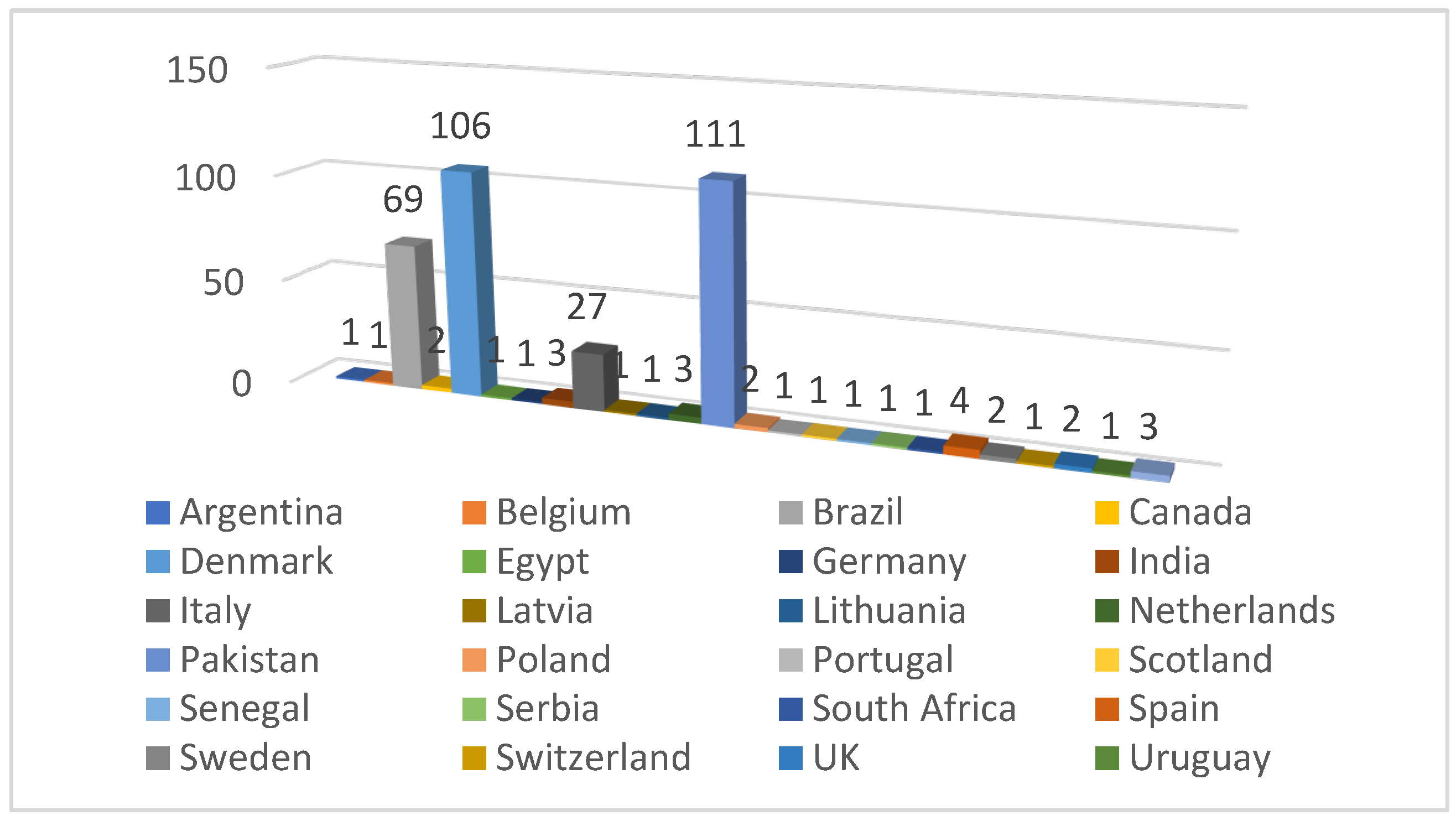
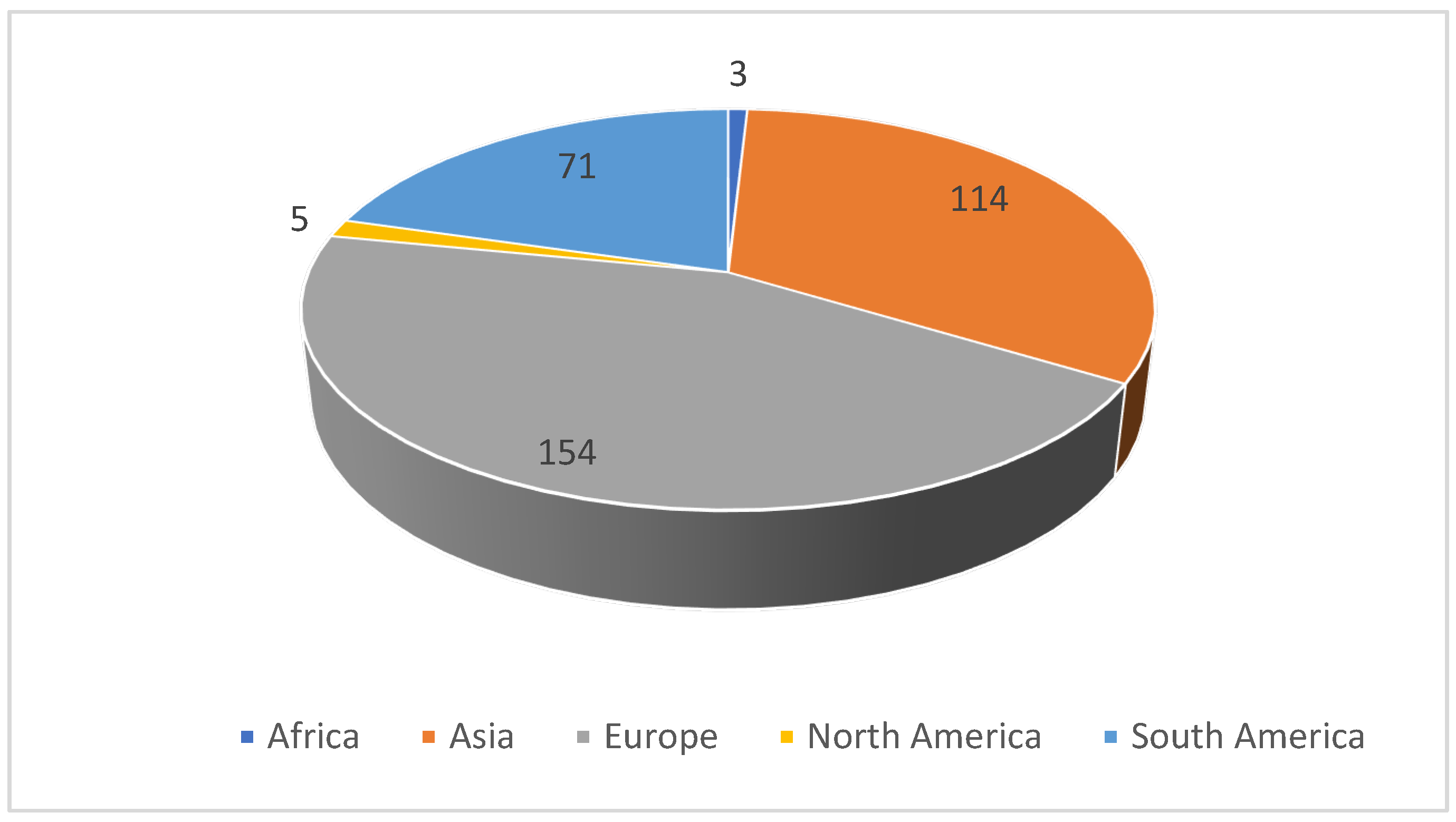
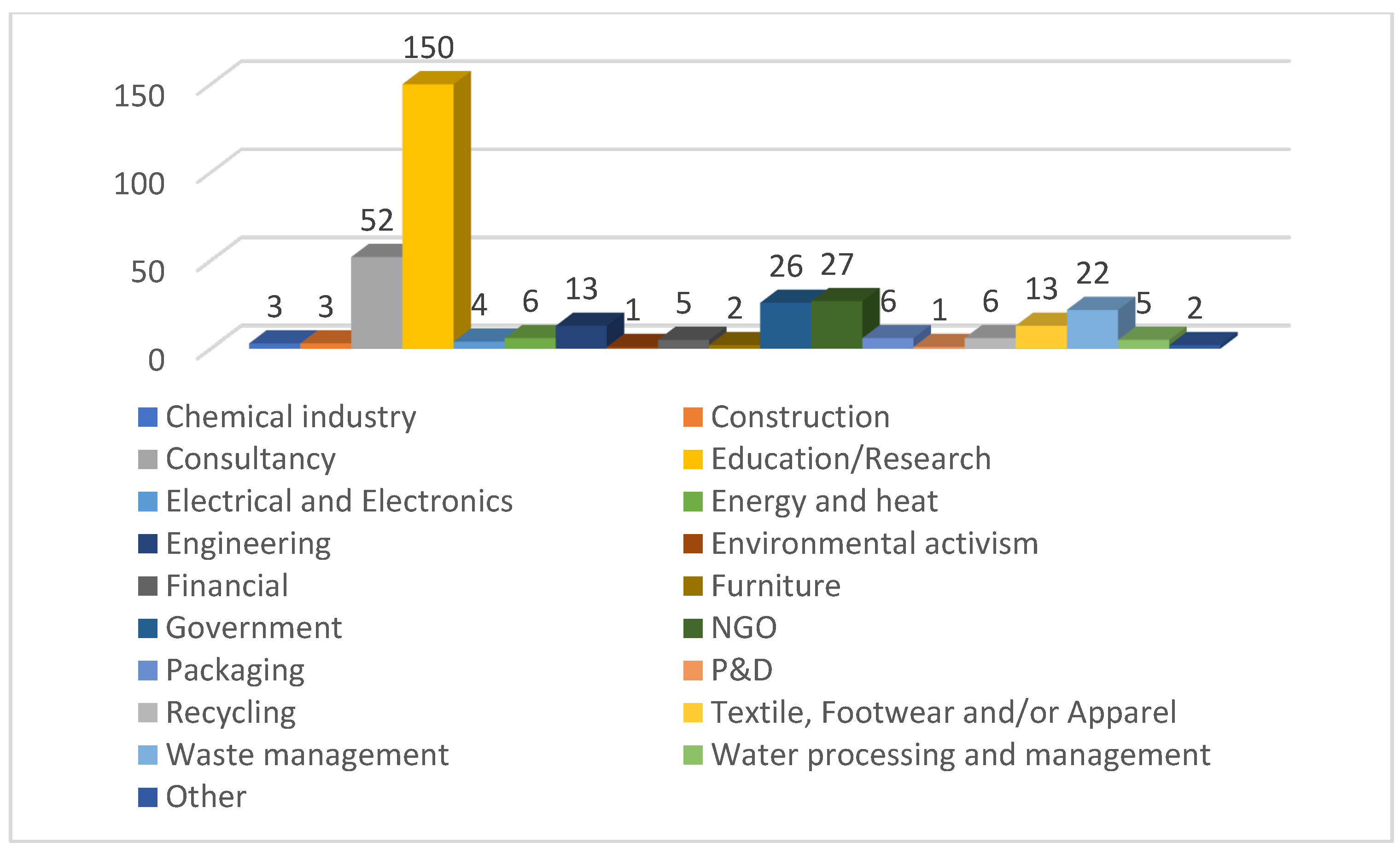
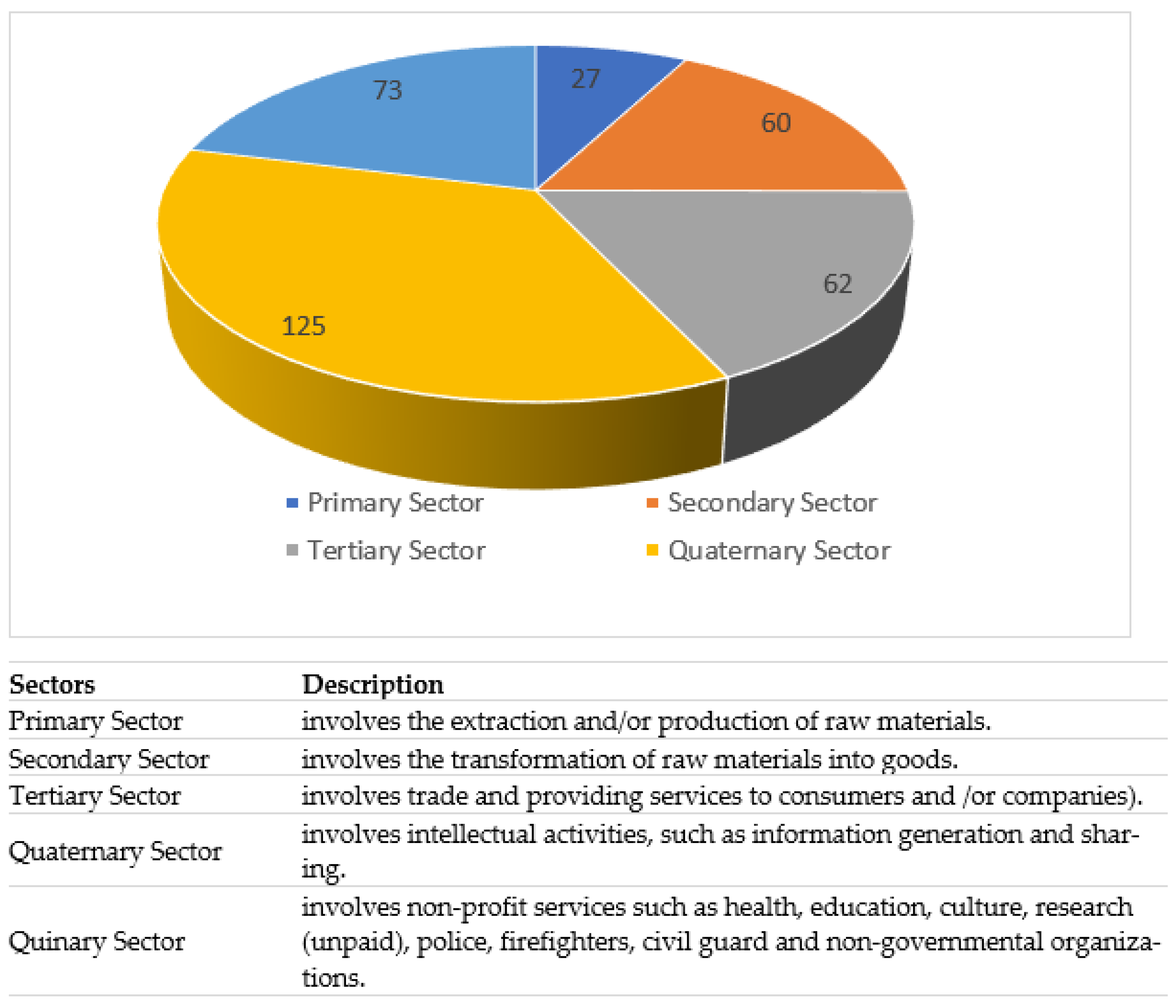
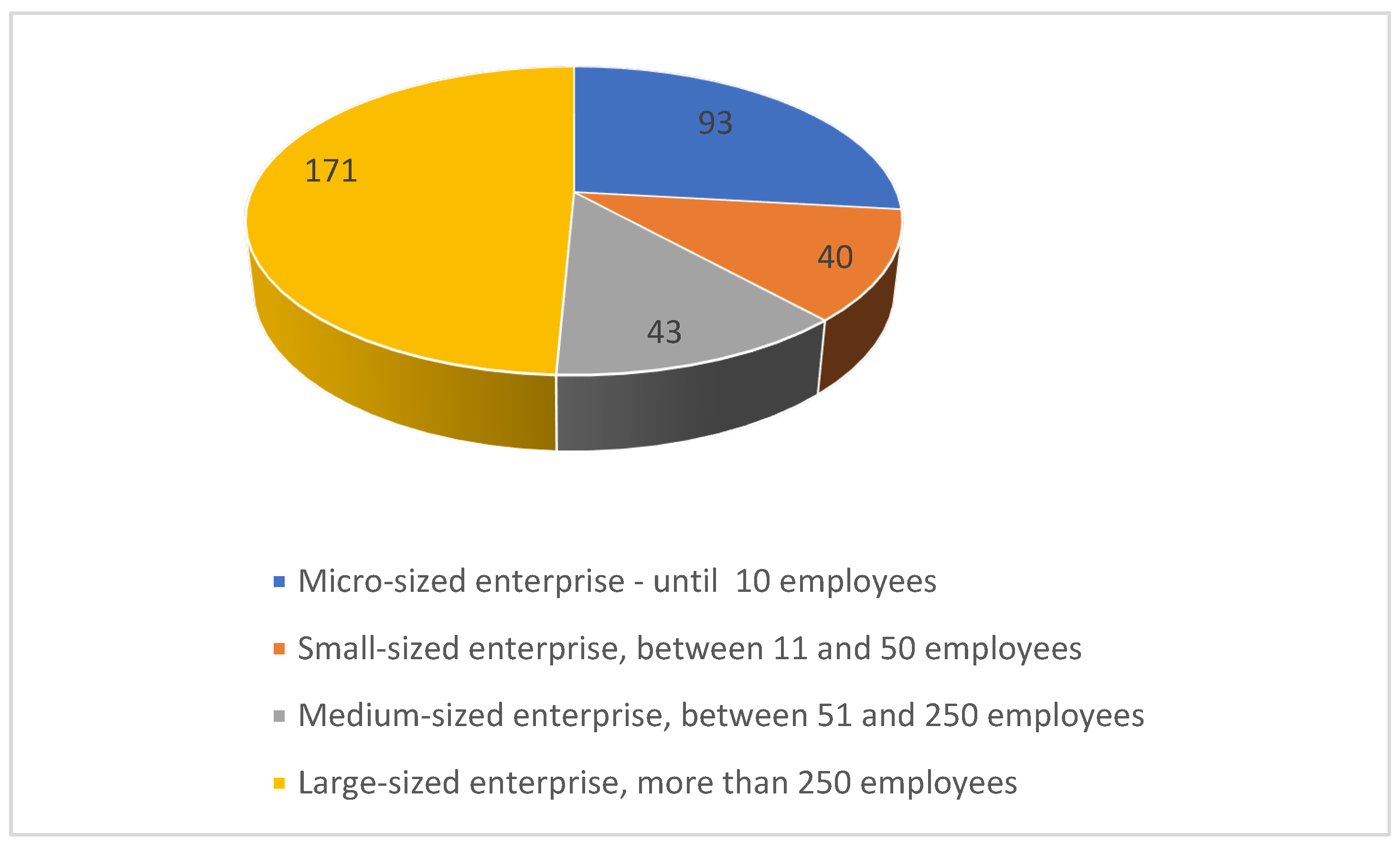
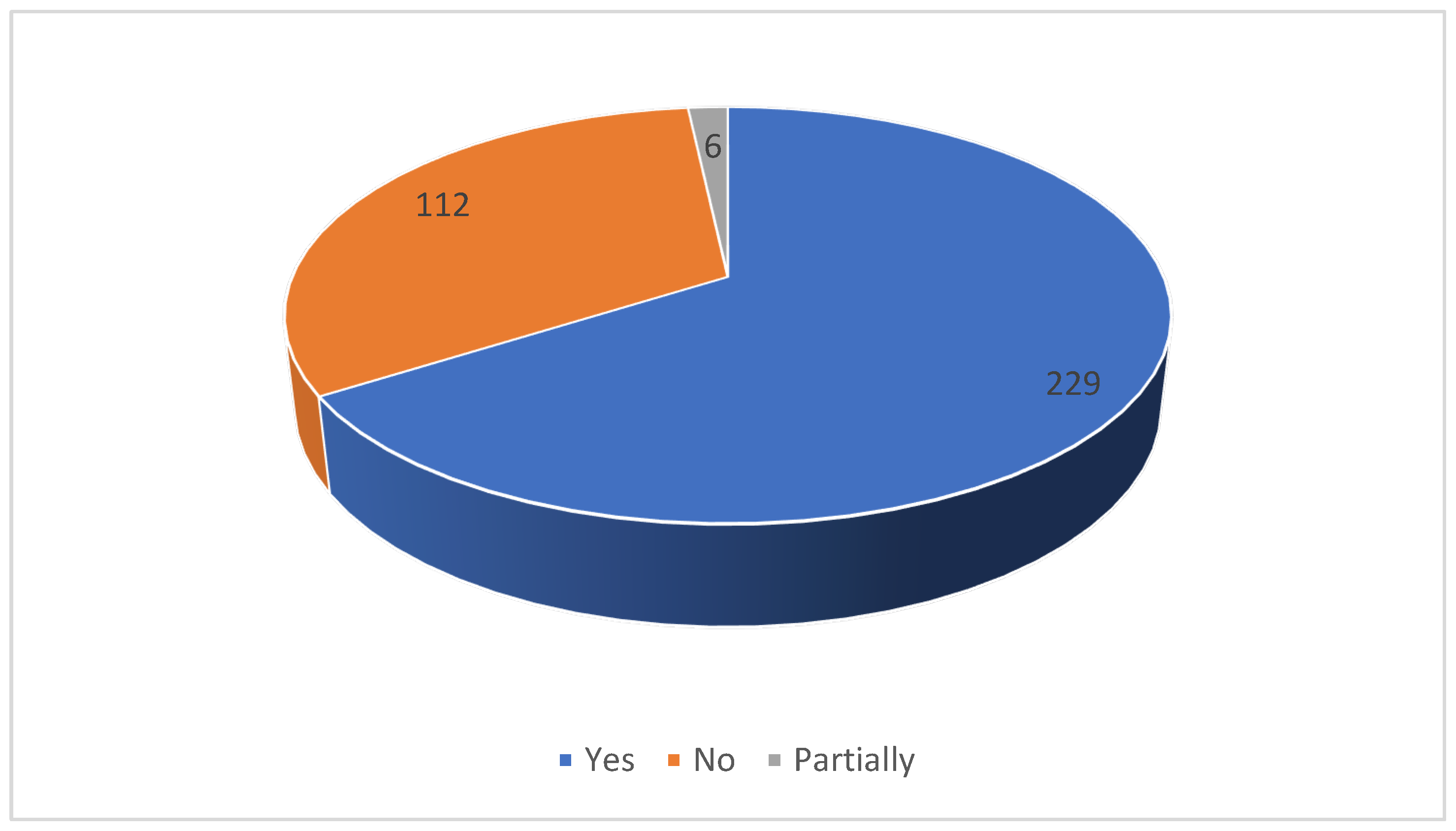
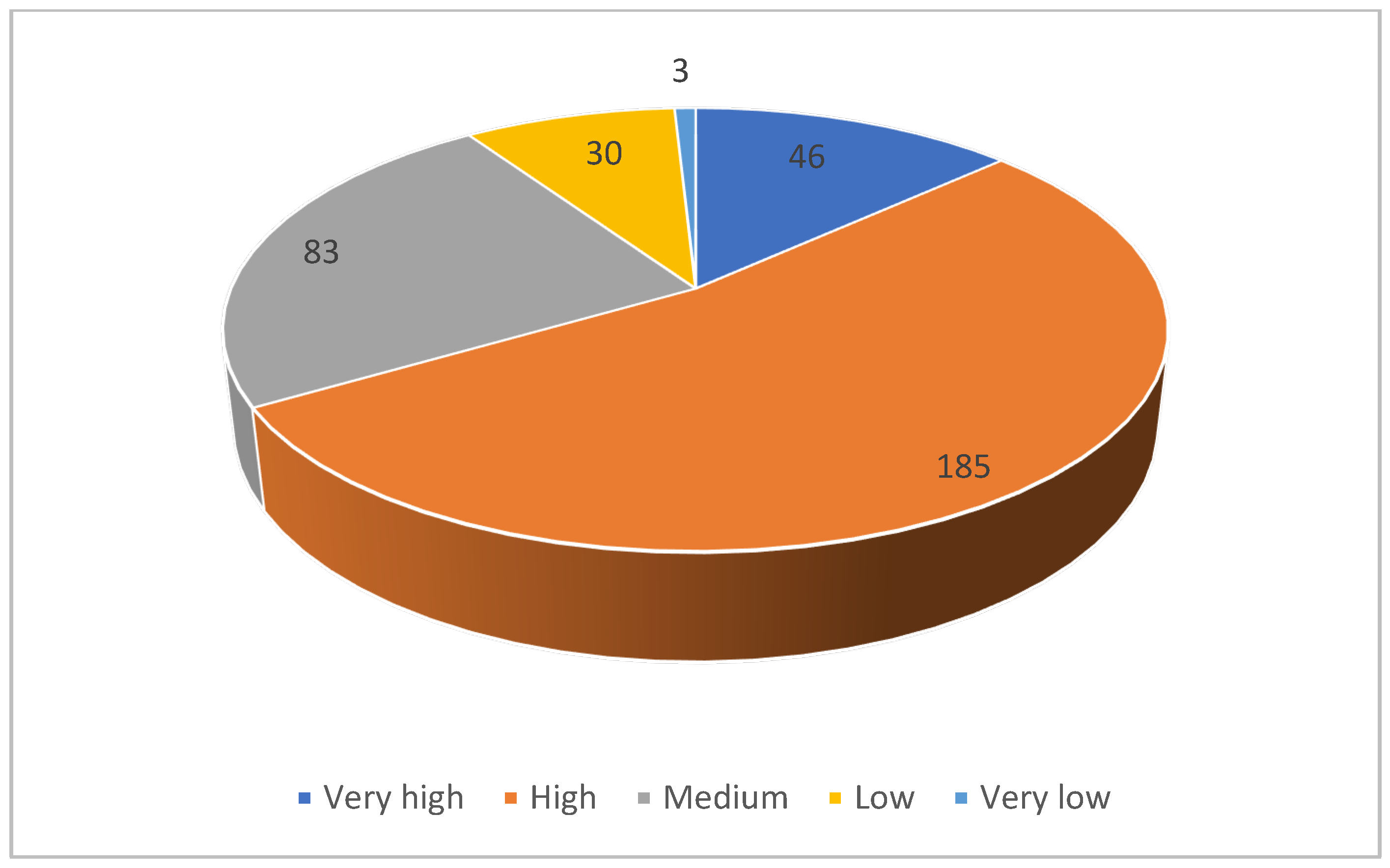
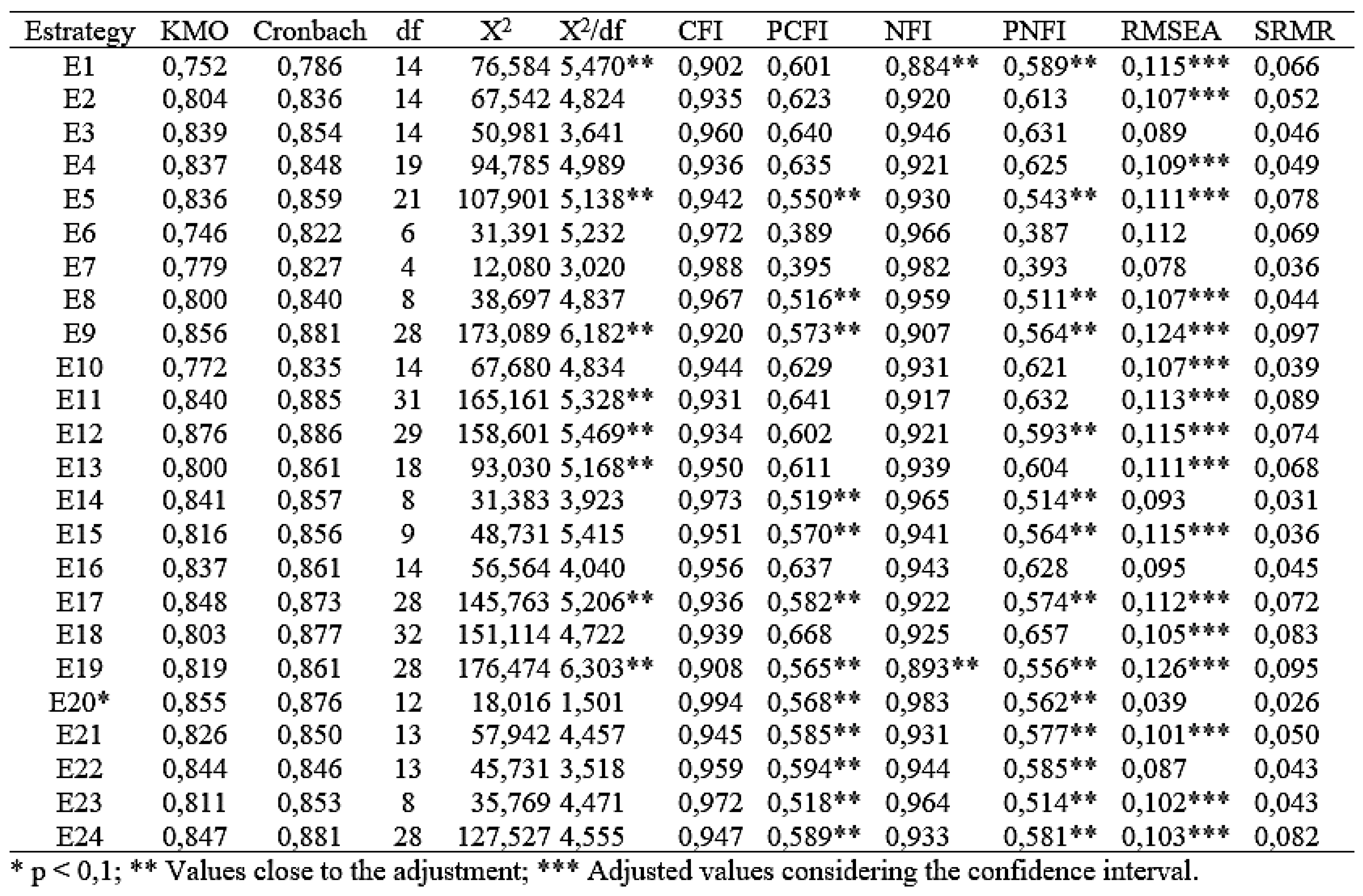
| REVERSE LOGISTICS: Logistics operationalization of the return of goods from their typical final destination with the purpose of recapturing value or carrying out the proper disposal. Uses the logistics infrastructure, involving the activities of transport, warehouse, storage, purchasing handling of goods, information system and others. It can be performed “in-house” or by outsourcing it, through third-party reverse logistics providers. This strategy: | |
| Complies with regional and national regulations. |
|
| Helps to increase public acceptance of the circular economy. | |
| Enhances the absorption of the regional workforce. | |
| Prevents incorrect waste disposal. | |
| Contributes to the preservation of the environment. | |
| Has a cost for implementation. | |
| Has a cost to maintain in operation. | |
| Has a difficulty to implement, due to the knowledge, technologies and solutions required. | |
| Has obstacles/barriers, based on the particular regional characteristics. | |
| Has the potential to remain constant, considering mainly maintenance requirements for specialized personnel and simplicity of operations. | |
| Total Variance Explained | |||||||||
|---|---|---|---|---|---|---|---|---|---|
| Initial Eigen Values | Extract Sums of Squared Loads | Rotation Sums of Squared Loads | |||||||
| Factor | Total | % of Variance | % Cumulative | Total | % of Variance | % Cumulative | Total | % of Variance | % Cumulative |
| 1 | 12,806 | 53,358 | 53,358 | 12,384 | 51,600 | 51,600 | 3994 | 16,643 | 16,643 |
| 2 | 1017 | 4239 | 57,597 | 0.622 | 2593 | 54,193 | 3564 | 14,851 | 31,493 |
| 3 | 0.875 | 3646 | 61,243 | 0.454 | 1893 | 56,085 | 3370 | 14,043 | 45,536 |
| 4 | 0.847 | 3530 | 64,773 | 0.431 | 1796 | 57,881 | 2963 | 12,345 | 57,881 |
| 5 | 0.718 | 2993 | 67,766 | ||||||
| 6 | 0.658 | 2742 | 70,507 | ||||||
| 7 | 0.612 | 2550 | 73,058 | ||||||
| 8 | 0.564 | 2351 | 75,408 | ||||||
| 9 | 0.543 | 2262 | 77,670 | ||||||
| 10 | 0.532 | 2215 | 79,886 | ||||||
| 11 | 0.509 | 2122 | 82,008 | ||||||
| 12 | 0.476 | 1984 | 83,992 | ||||||
| 13 | 0.433 | 1806 | 85,797 | ||||||
| 14 | 0.413 | 1719 | 87,517 | ||||||
| 15 | 0.367 | 1531 | 89,048 | ||||||
| 16 | 0.351 | 1461 | 90,509 | ||||||
| 17 | 0.344 | 1432 | 91,941 | ||||||
| 18 | 0.315 | 1313 | 93,253 | ||||||
| 19 | 0.308 | 1285 | 94,538 | ||||||
| 20 | 0.296 | 1234 | 95,773 | ||||||
| 21 | 0.280 | 1169 | 96,941 | ||||||
| 22 | 0.262 | 1091 | 98,033 | ||||||
| 23 | 0.249 | 1037 | 99,069 | ||||||
| 24 | 0.223 | 0.931 | 100,000 | ||||||
| Factor | ||||
|---|---|---|---|---|
| 1 | 2 | 3 | 4 | |
| E17 | 0.614 | |||
| E12 | 0.614 | |||
| E9 | 0.557 | |||
| E19 | 0.537 | |||
| E5 | 0.507 | |||
| E11 | ||||
| E18 | ||||
| E16 | ||||
| E13 | ||||
| E21 | 0.710 | |||
| E22 | 0.703 | |||
| E20 | 0.577 | |||
| E24 | 0.525 | |||
| E23 | 0.519 | |||
| E8 | 0.602 | |||
| E10 | 0.581 | |||
| E15 | 0.567 | |||
| E14 | 0.527 | |||
| E7 | 0.512 | |||
| E6 | ||||
| E1 | 0.603 | |||
| E2 | 0.575 | |||
| E3 | 0.524 | |||
| E4 | ||||
| Variable | Factor | Standardized Coefficient | Error | Factorial Reliability | Individual Reliability | Cronbach Alfa |
|---|---|---|---|---|---|---|
| E17 | 1 | 0.614 | 0.386 | Yes | Yes | 0.875 |
| E12 | 0.614 | 0.386 | Yes | Yes | ||
| E9 | 0.557 | 0.443 | Yes | Yes | ||
| E19 | 0.537 | 0.463 | Yes | Yes | ||
| E5 | 0.507 | 0.493 | Yes | Yes | ||
| E21 | 2 | 0.710 | 0.290 | Yes | Yes | 0.882 |
| E22 | 0.703 | 0.297 | Yes | Yes | ||
| E20 | 0.577 | 0.423 | Yes | Yes | ||
| E24 | 0.525 | 0.475 | Yes | Yes | ||
| E23 | 0.519 | 0.481 | Yes | Yes | ||
| E8 | 3 | 0.602 | 0.398 | Yes | Yes | 0.88 |
| E10 | 0.581 | 0.419 | Yes | Yes | ||
| E15 | 0.567 | 0.433 | Yes | Yes | ||
| E14 | 0.527 | 0.473 | Yes | Yes | ||
| E7 | 0.512 | 0.488 | Yes | Yes | ||
| E1 | 4 | 0.603 | 0.397 | Yes | Yes | 0.798 |
| E2 | 0.575 | 0.425 | Yes | Yes | ||
| E3 | 0.524 | 0.476 | Yes | Yes |
| Country | Description |
|---|---|
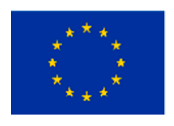 European Union | Over the past decades, the European Union has put in place a broad range of environmental legislation to boost a European circular economy, such as the Waste Framework Directive, the Landfill Directive and the Packaging Waste Directive. The action plan focuses on the action at the EU level with high added value. Making the circular economy a reality will, however, require long-term involvement at all levels, from Member States, regions and cities, to businesses and citizens. |
 Denmark | In 2018, the Danish Minister of Environment and Food and the Minister of Industries, Business and Financial Affairs launched the government’s new strategy for the circular economy. The new strategy, which has six focal areas and 15 activities, is based on the suggestions of the government’s Advisory Board on the Circular Economy. These initiatives aim to support the Danish transition into a more circular economy, e.g., by strengthening the companies’ opportunities to become a motivating force for the circular transition and to create a well-functioning market for waste and reused goods. The Danish government has set aside EUR 16 million to accelerate the transition. |
 Italy | Italy has created, in 2018, the Italian Circular Economy Stakeholder Platform—ICESP, initiated by Energia Nucleare ed Energia Alternative (ENEA), mirroring the European initiative (ECESP) to enable initiatives, experiences, the discussion of critical issues and perspectives and to promote specific dedicated actions related to the transition towards a circular economy. ICESP has set up six working groups, which meet periodically to draw up reviews, technical reports and studies on the topics covered in the course of their activities as well as to map out good circular economy practices, in connection with ECESP. Some regions have specific legislation, as the Emilia Romagna region which enacted the first law related to circular economy. |
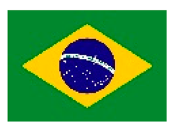 Brazil | Currently, there is no national strategy in Brazil for implementing a circular economy. However, there are some policies, programs and plans to boost the transition to circular economy practices, such as the CE100 initiative from EMF, in which some industries and stakeholders in Brazil have adhered. The Confederation of Brazilian Industries (CNI) and the Ministry of Science, Technology, Innovation and Communication (MCTIC) have tried to engage industries, research centers, universities and other segments of society to discuss the transition towards the circular economy. In 2010, Brazil enacted the Brazilian Solid Waste Policy (PNRS), which was the first public policy to be adopted in waste management. Within this framework, themes such as EC have become the focus of discussion. |
 Pakistan | Pakistan lacks a comprehensive national strategy and legislation about the circular economy. Recently, Pakistani government has taken some initiatives regarding CE, including possible removal of plastic bags. Pakistan Environmental Protection Act (PEPA) prohibits discharge of waste in an amount or concentration that violates the National Environmental Quality Standards (NEQS). Hazardous Substances Rules (2003) and 2016 prevent the release of hazardous substances as wastes. National Environmental Policy (2005) and Import Policy Order (2016) prevent the import of hazardous wastes to Pakistan. Guidelines for Hospital Waste Management (2005) and 2014 since 1998 prepared by the Environmental Health Unit of the Ministry of Health, Government of Pakistan relates to managing wastes that are produced by hospitals. Prime Minister’s Committee on Climate Change, which was established to ensure that Pakistan fulfills requirements of Clean Development Mechanism (CDM) under the Kyoto Protocol. This committee has a sub-divisional level technical committee on Waste Management. The Clean Green Pakistan Movement (CGPM), which was launched in 2018, addresses solid waste management, liquid waste management, total sanitation and safe drinking water and plantation. Clean Green Index: A “Clean-Green Cities Index” has been initiated in 20 cities to trigger a shift towards improved waste management and sanitation. |
Disclaimer/Publisher’s Note: The statements, opinions and data contained in all publications are solely those of the individual author(s) and contributor(s) and not of MDPI and/or the editor(s). MDPI and/or the editor(s) disclaim responsibility for any injury to people or property resulting from any ideas, methods, instructions or products referred to in the content. |
© 2022 by the authors. Licensee MDPI, Basel, Switzerland. This article is an open access article distributed under the terms and conditions of the Creative Commons Attribution (CC BY) license (https://creativecommons.org/licenses/by/4.0/).
Share and Cite
Guarnieri, P.; e Silva, L.C.; Haleem, F.; Bianchini, A.; Rossi, J.; Wæhrens, B.V.; Farooq, S.; Reyes, E., Jr.; Reis, A.L.N.; Vieira, B.d.O. How Can We Measure the Prioritization of Strategies for Transitioning to a Circular Economy at Macro Level? A New Approach. Sustainability 2023, 15, 680. https://doi.org/10.3390/su15010680
Guarnieri P, e Silva LC, Haleem F, Bianchini A, Rossi J, Wæhrens BV, Farooq S, Reyes E Jr., Reis ALN, Vieira BdO. How Can We Measure the Prioritization of Strategies for Transitioning to a Circular Economy at Macro Level? A New Approach. Sustainability. 2023; 15(1):680. https://doi.org/10.3390/su15010680
Chicago/Turabian StyleGuarnieri, Patricia, Lucio Camara e Silva, Fazli Haleem, Augusto Bianchini, Jessica Rossi, Brian Vejrum Wæhrens, Sami Farooq, Edgar Reyes, Jr., André Luiz Nascimento Reis, and Barbara de Oliveira Vieira. 2023. "How Can We Measure the Prioritization of Strategies for Transitioning to a Circular Economy at Macro Level? A New Approach" Sustainability 15, no. 1: 680. https://doi.org/10.3390/su15010680
APA StyleGuarnieri, P., e Silva, L. C., Haleem, F., Bianchini, A., Rossi, J., Wæhrens, B. V., Farooq, S., Reyes, E., Jr., Reis, A. L. N., & Vieira, B. d. O. (2023). How Can We Measure the Prioritization of Strategies for Transitioning to a Circular Economy at Macro Level? A New Approach. Sustainability, 15(1), 680. https://doi.org/10.3390/su15010680










